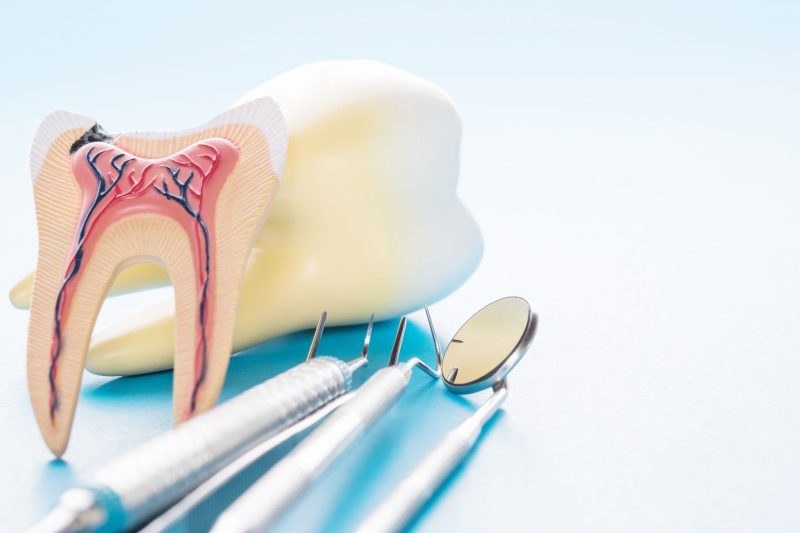Root canal for the prevention of infections
What is root canal?
Root canal is one of the most common treatments that help patients save a tooth that has become seriously infected by decay or through injury. When a tooth has suffered from an extensive infection and it is unable to be cured with medication, root canal becomes a necessary solution. If the infection penetrates deeper into the tooth, the bone underneath can be affected, creating an internal cyst. This situation causes intense discomfort to the patient and there is a risk for the need of total removal of the tooth.

The procedure
During the root canal process, the dentist administers local anaesthesia to the patient, he removes the infected part of the tooth, including vessels and nerves and at the same time he tries to clean it. Then, he places a biocompatible material called gutta-percha, with the aim of preventing the re-infection of the tooth. Finally, he restores the tooth and depending on the case, he decides which method is about to follow, such as the application of a dental filling or a dental case.
Duration and results
Root canal usually needs one session to be completed, unless the incident is serious and requires a second one. After the operation and when the anaesthesia fades away, there is a possibility that the patient will feel discomfort in the area for a certain amount of time, something that can be treated with the administration of anti-inflammatory or analgesic pills. Also, until the tooth is fully restored, the avoidance of chewing hard foods is recommended. Under these circumstances, the patient will not need to take antibiotics in order to recover. However, it has to be mentioned that each incident is unique and can be successfully treated via properly methods adjusted to patient’s needs and regular monitoring by the dentist.

